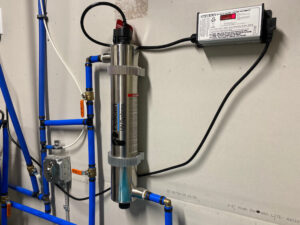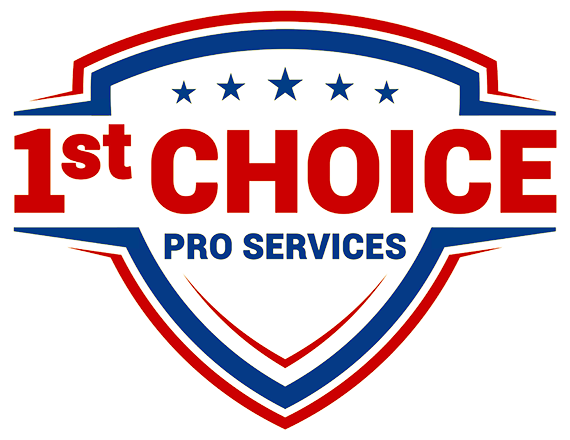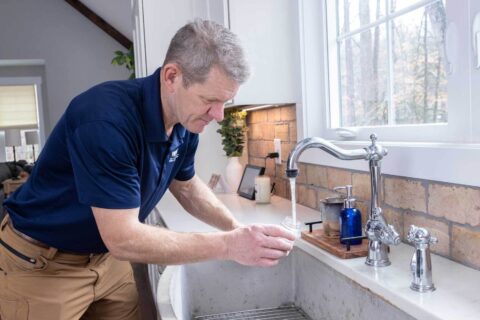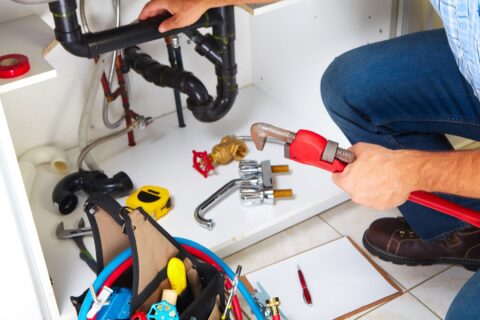How Does UV Light Purification Work for Air and Water?
UV light air purification explained reveals a powerful method to clean indoor air. Unlike traditional filtration systems, UV light targets harmful pathogens directly. This technology uses ultraviolet rays to destroy bacteria, viruses, and mold spores. It’s a game-changer for homes and offices seeking healthier environments.
Many people rely on HEPA filters alone, but these don’t eliminate all airborne threats. UV purification adds an extra layer of protection. It’s effective, efficient, and easy to integrate into existing HVAC systems. Understanding how this process works can help you make informed choices for better air quality. Discover the benefits of UV light air purification and why it’s essential for your health.
Key Takeaways
-
UV light purification is an effective method for reducing harmful microorganisms in the air, making it a valuable tool for improving indoor air quality.
-
Understanding how UVGI (Ultraviolet Germicidal Irradiation) works helps you appreciate its role in both air and water purification systems.
-
To achieve maximum effectiveness, ensure that the UV dose is sufficient to target specific pathogens; this can vary based on the type of microorganism.
-
Be aware of safety concerns related to UV exposure; proper shielding and monitoring are essential to protect users and pets in indoor environments.
-
Different industries, from healthcare to food processing, utilize UV light purification for its efficiency and ability to enhance safety standards.
-
Consider implementing UV light air purification systems in your home or workplace to help reduce airborne pathogens and improve overall health.
Understanding UV Light Purification
Definition of UV Light
Ultraviolet (UV) light is a type of electromagnetic radiation. It exists beyond the visible spectrum, with wavelengths shorter than visible light. UV light has different categories, including UVA, UVB, and UVC. UVC light, in particular, plays a crucial role in air purification. It can kill or deactivate microorganisms such as bacteria and viruses. This ability makes it effective in cleaning the air we breathe.
Significance of UVGI Technology
Ultraviolet Germicidal Irradiation (UVGI) technology enhances indoor air quality significantly. It uses UVC light to disinfect air by targeting harmful pathogens. When air passes through a UVGI system, the UV light disrupts the DNA of microorganisms. This process renders them unable to reproduce and cause illness.
Studies show that UVGI can reduce airborne pathogens by over 90%. Hospitals and laboratories often use this technology to maintain sterile environments. However, its benefits extend beyond medical facilities. Homes and offices increasingly adopt UVGI systems for cleaner air. Enhanced indoor air quality leads to better health outcomes. Fewer airborne diseases mean fewer sick days and improved productivity.
Differences from Traditional Methods
Traditional air purification methods include HEPA filters and activated carbon filters. These systems capture particles from the air but do not kill microorganisms. HEPA filters trap allergens like dust mites and pet dander effectively. However, they may not eliminate viruses or bacteria.
In contrast, UVGI systems actively destroy these pathogens. They work alongside traditional methods, enhancing overall effectiveness. While HEPA filters clean physical particles, UVGI targets invisible threats.
Moreover, traditional systems require regular maintenance and filter changes. Filters can become clogged over time, reducing their efficiency. On the other hand, UVGI systems typically have lower maintenance needs. The UVC lamps need replacement only after a specific duration of use.
Practical Applications
Many industries apply UV light purification effectively. Water treatment plants use UV light to disinfect drinking water without chemicals. Air conditioning units also incorporate UV lights to keep coils clean and prevent mold growth.
Homeowners can install standalone UV purifiers or integrate them into existing HVAC systems. These devices improve indoor air quality while reducing odors and allergens.
Origins of UV Germicidal Action
Historical Development
The journey of UV germicidal action began in the mid-1930s. Scientists first discovered that ultraviolet light could kill bacteria. In 1935, a significant study demonstrated the germicidal properties of UV light. Researchers found that short-wave UV light effectively inactivated various microorganisms. This marked a pivotal moment in understanding how UV light could purify air and water.
By the 1940s, hospitals started using UVGI systems to disinfect air and surfaces. These systems aimed to reduce hospital-acquired infections. The technology gained traction during World War II. Military hospitals utilized UV light to maintain sterile environments. This period established a strong foundation for future research and applications.
Key Experiments and Findings
Several experiments solidified the effectiveness of UV germicidal irradiation (UVGI). A notable experiment occurred in 1950 when scientists tested its impact on tuberculosis bacteria. They exposed these bacteria to UV light and observed a significant reduction in their viability. This finding highlighted UVGI’s potential as an effective disinfection method.
In 1997, a landmark study showed that UV light could eliminate airborne viruses. Researchers exposed air samples containing viruses to UV radiation. Results indicated nearly complete inactivation of the viruses within minutes. This experiment confirmed that UVGI could play a vital role in improving indoor air quality.
Further studies in the early 2000s explored UVGI’s effect on various pathogens, including influenza and SARS-CoV. Researchers consistently found that UV light effectively reduced pathogen levels. These findings led to increased interest in integrating UVGI into modern air purification systems.
Resurgence of Interest
Recent health challenges have sparked renewed interest in UV germicidal action. The COVID-19 pandemic heightened awareness of airborne pathogens. As a result, many institutions began exploring advanced disinfection methods, including UVGI.
Businesses and schools adopted UVGI systems to protect against viral transmission. Hospitals also expanded their use of UV light for infection control. This resurgence emphasizes the importance of maintaining clean air environments.
Research continues to evolve, focusing on optimizing UVGI technology for better efficiency. Innovations include portable devices and improved lamp designs. These advancements aim to make UVGI more accessible for everyday use.
How UVGI Works for Air and Water
Mechanism of Inactivation
UV light works by damaging the DNA or RNA of microorganisms. This process is known as photodimerization. When UV light hits a microorganism, it causes the formation of bonds between adjacent bases in the DNA. These bonds prevent the organism from replicating. The damage disrupts essential cellular functions, leading to cell death or loss of infectivity.
Most effective wavelengths for this action fall within the UVC range, specifically around 254 nanometers. At this wavelength, UV light can effectively inactivate bacteria, viruses, and fungi. For instance, studies show that exposure to UVC light can reduce viral loads by up to 99% within seconds.
Air vs. Water Treatment
The application of UVGI (Ultraviolet Germicidal Irradiation) differs between air and water treatment. In air purification, UVGI systems often use open-air designs or enclosed chambers. They expose air to UV light as it circulates through HVAC systems. This method helps eliminate airborne pathogens like mold spores and bacteria.
Water treatment systems typically involve flow-through reactors. Water passes through a chamber where it is exposed to UV light before being distributed for use. This design ensures that all water receives adequate exposure to inactivate harmful microorganisms.
Both methods rely on similar principles but differ in design due to medium properties. Air has lower density than water, requiring different exposure times and intensities for effective disinfection.
Importance of System Design
Proper system design is crucial for effective UVGI implementation. Factors such as lamp intensity, exposure time, and flow rates must be considered. If any component is not optimized, the effectiveness of the system can drop significantly.
For air treatment systems, ensuring that all air passes through the UV light zone is vital. Dead zones where air does not circulate may allow pathogens to survive. Similarly, in water treatment, uneven flow can lead to areas receiving insufficient UV exposure.
Regular maintenance also plays a key role in performance. Dirty lamps or improper positioning can reduce UV output, compromising disinfection efficacy. Following manufacturer guidelines ensures that systems operate at peak efficiency.
In summary, understanding how UV light inactivates microorganisms helps clarify its role in purification processes. The differences in application for air versus water highlight the adaptability of UVGI technology. Lastly, proper design and maintenance are essential for achieving optimal results in both scenarios.
Effectiveness Against Microorganisms
Pathogen Inactivation
UVGI (Ultraviolet Germicidal Irradiation) is effective against various pathogens. Research shows it can inactivate bacteria like Escherichia coli and Staphylococcus aureus. These bacteria are common in many environments. UV light also targets viruses such as influenza and coronaviruses, including SARS-CoV-2. Protozoa like Giardia lamblia and Cryptosporidium are also affected by UVGI.
Studies confirm that UV light disrupts the DNA of these microorganisms. This disruption prevents them from reproducing and causing infections. The effectiveness varies among different pathogens. For example, UVGI is more efficient against viruses than protozoa.
Comparative Effectiveness
When comparing UVGI’s effectiveness, bacteria generally show higher resistance than viruses. Bacteria need higher doses of UV light for complete inactivation. However, viruses respond well to lower doses. For instance, a study found that UVGI can reduce viral load by 99% within seconds of exposure.
Protozoa present unique challenges. They often have protective cysts that shield them from UV light. In some cases, UVGI must be combined with other methods for complete removal. Despite this, UVGI remains a powerful tool against a wide range of pathogens.
Case Studies
Several case studies highlight the successful applications of UVGI in real-world settings. Hospitals use UVGI systems to disinfect surgical rooms and patient areas. A study at a major hospital showed a 30% reduction in healthcare-associated infections after implementing UVGI technology.
Another example comes from water treatment facilities. A facility in California used UVGI to treat drinking water contaminated with Cryptosporidium. The results showed a significant decrease in pathogen levels, making the water safe for consumption.
Schools also benefit from UVGI systems. A school district installed UV lights in their HVAC systems to improve air quality. Reports indicated fewer cases of respiratory illnesses among students after installation.
These examples showcase how UVGI effectively combats various microorganisms across different environments. The technology not only protects health but also enhances overall safety.
Required UV Dose for Efficacy
Influencing Factors
Several factors influence the required UV dose for effective disinfection. The type of microorganism plays a vital role. Bacteria, viruses, and fungi have different sensitivities to UV light. For example, some bacteria require a higher dose than others to achieve inactivation.
The wavelength of UV light also matters. UV-C light, specifically between 200 to 280 nanometers, is most effective for disinfection. The intensity of the UV source affects how much energy reaches the target microorganisms. Distance from the light source impacts exposure as well. The further away a surface or air particle is from the UV lamp, the less effective the disinfection will be.
Environmental conditions can alter effectiveness too. Dust, smoke, and humidity can absorb or scatter UV light. Higher humidity levels may reduce UV efficacy by causing more water vapor in the air. This interaction can lead to a need for higher doses to achieve the same level of disinfection.
Exposure Time vs. UV Intensity
The relationship between exposure time and UV intensity is critical for achieving effective disinfection. Longer exposure times generally result in greater germicidal effects. However, this must be balanced against the intensity of the UV source.
For instance, a low-intensity UV light requires longer exposure times to achieve similar results as a high-intensity source. A rule of thumb is that doubling the intensity allows for halving the exposure time while maintaining effectiveness. Therefore, understanding this balance helps in designing better air purification systems.
Determining Appropriate UV Dose
Determining the appropriate UV dose for different environments involves specific guidelines. First, assess the type of microorganisms present in that environment. Different settings like hospitals, schools, or homes may harbor various pathogens.
Next, consider the air flow rate and volume of space needing treatment. Larger spaces might require more powerful UV systems or multiple units to ensure adequate coverage.
Lastly, consult manufacturer specifications for their devices. They often provide recommended doses based on testing under controlled conditions.
-
Identify microorganisms.
-
Measure room size.
-
Check air flow rates.
-
Refer to device specs.
Safety Concerns and Exposure Limits
Health Risks
Potential health risks exist with UV light exposure. Short-term exposure can cause skin burns. This is known as photokeratitis, which affects the eyes. Symptoms include redness and pain. Long-term exposure may increase the risk of skin cancer.
UV-C light is particularly dangerous. It can damage DNA in skin cells. This damage may lead to mutations and cancer over time. Studies indicate that even low-level exposure can have harmful effects if consistent over a long period.

Safety Standards
Established safety standards help protect individuals from UV radiation. The American National Standards Institute (ANSI) sets guidelines for UVGI systems. They recommend limits on UV intensity to ensure safety.
For instance, ANSI/IES RP-27-20 outlines safe exposure levels for both workers and the public. It suggests a maximum permissible exposure (MPE) limit of 0.1 mW/cm² for UV-C light at 254 nm wavelength. This limit helps prevent harmful effects while still allowing effective air purification.
Occupational Safety and Health Administration (OSHA) also monitors workplace safety regarding UV exposure. They provide regulations for safe operating procedures in environments using UV light.
Protective Measures
Protective measures are essential for users and maintenance personnel. First, wearing protective gear is crucial. This includes gloves, goggles, and long-sleeved clothing. These items minimize direct contact with UV light.
Second, installing UVGI systems in enclosed areas reduces exposure risk. Proper shielding around the system helps contain UV radiation. This ensures that only treated air exits the unit.
Regular maintenance checks are vital too. Personnel should inspect systems frequently to ensure they function correctly. If a bulb breaks or malfunctions, it can release harmful UV rays into the environment.
Lastly, training staff about UV safety is important. Knowledge of potential risks empowers individuals to take necessary precautions. Training programs should cover proper handling and operation of UVGI systems.
Impact on Indoor Air Chemistry
UVGI Effects
UVGI (Ultraviolet Germicidal Irradiation) significantly alters the chemical composition of indoor air. It targets microorganisms like bacteria and viruses, breaking down their DNA or RNA. This process reduces their presence in the air. However, it also affects other airborne substances.
The breakdown of these microorganisms can release various byproducts into the air. These byproducts may include volatile organic compounds (VOCs). VOCs can come from materials like carpets, paints, and cleaning products. When UV light interacts with these substances, it can create new compounds that were not present before.
Byproducts Generated
The UV treatment process is not without its downsides. Some byproducts generated during UV treatment can be harmful. For example, ozone can form when UV light interacts with oxygen molecules in the air. Ozone is a known respiratory irritant. High levels of ozone can cause discomfort for individuals with asthma or other lung conditions.
Other potential byproducts include aldehydes and ketones. These compounds can lead to poor indoor air quality. They may cause symptoms like headaches, dizziness, and irritation of the eyes and throat. Understanding these byproducts is crucial for assessing the safety of UVGI systems in homes and workplaces.
Health Implications
Altered air chemistry has direct implications for human health and comfort. Changes in indoor air quality can lead to various health issues. Increased levels of harmful byproducts can exacerbate existing respiratory conditions. Individuals with allergies may find their symptoms worsening due to new chemical exposures.
Moreover, the psychological comfort of occupants can also be affected. Poor air quality often leads to decreased productivity and increased stress levels. For instance, a study published in 2019 indicated that employees reported lower satisfaction levels in environments with high VOC exposure.
Maintaining a balance between effective disinfection and safe air quality is essential. Regular monitoring of indoor air chemistry helps ensure that UVGI systems do not compromise health or comfort.
In summary, while UVGI effectively reduces pathogens in indoor air, it also alters its chemical makeup. Understanding the potential byproducts generated during this process is vital for maintaining good indoor air quality. The implications for human health are significant and warrant careful consideration when implementing these purification systems.
Applications in Various Industries
Healthcare Settings
UVGI plays a crucial role in healthcare environments. Hospitals use UV light to reduce the spread of infections. Studies show that ultraviolet light can kill up to 99.9% of bacteria and viruses. This is vital in areas like operating rooms and intensive care units.
In 2020, many hospitals adopted UV disinfection systems during the COVID-19 pandemic. These systems helped lower infection rates. Staff used portable UV devices to sanitize surfaces quickly. This technology became essential for patient safety.
Food Processing
The food processing industry also utilizes UVGI technology. Many companies apply UV light to disinfect food products and packaging. This method helps eliminate harmful pathogens without using chemicals.
For instance, UV treatment can extend shelf life by reducing spoilage organisms on fruits and vegetables. In 2018, a study found that UV light effectively reduced E.coli levels on lettuce. This finding encouraged more food manufacturers to adopt UVGI systems.
Residential Air Purification
Homeowners increasingly rely on UVGI for air purification. Many residential HVAC systems now include UV lights. These lights help improve indoor air quality by killing airborne germs and allergens.
According to the American Society of Heating, Refrigerating and Air-Conditioning Engineers (ASHRAE), using UVGI can significantly reduce respiratory illnesses at home. Families with allergies or asthma benefit from cleaner air.
Installation is straightforward, making it accessible for most households. Homeowners can install these systems alongside existing air filters for enhanced protection.
Environmental Benefits
UVGI systems offer environmental benefits too. They reduce the need for chemical disinfectants, which can harm ecosystems. By using UV light, industries minimize chemical waste and pollution.
These systems consume less energy compared to traditional methods. For example, studies indicate that UVGI systems require less electricity than ozone generators or chemical treatments.
Summary
The applications of UV light air purification span various industries. From healthcare settings fighting infections to food processing ensuring safety, the uses are diverse. Residential air purification systems also gain traction among homeowners seeking cleaner air.
As awareness grows about indoor air quality’s importance, UVGI technology will likely see wider adoption across sectors.
Closing Thoughts
Understanding UV light air purification is crucial for improving your indoor environment. This technology effectively eliminates harmful microorganisms, ensuring cleaner air in your spaces. By grasping how UVGI works and its applications across various industries, you can make informed decisions about its use in your home or business.
Embrace the benefits of UV light purification for healthier air quality. Stay proactive about safety concerns and necessary exposure limits to maximize effectiveness. Consider integrating this innovative solution into your air purification strategy. Take charge of your air quality today—explore UV options and enhance your wellbeing!
Frequently Asked Questions
What is UV light air purification?
UV light air purification uses ultraviolet (UV) light to disinfect and purify the air. It targets and neutralizes harmful microorganisms, improving indoor air quality effectively.
How does UVGI work?
Ultraviolet Germicidal Irradiation (UVGI) works by emitting UV-C light, which damages the DNA of bacteria, viruses, and molds. This prevents them from reproducing and eliminates their ability to cause harm.
Is UV light air purification safe?
When used properly, UV light air purification is safe for humans and pets. However, direct exposure to UV-C light can be harmful, so devices are designed to contain the light within a controlled environment.
How effective is UV light against germs?
UV light is highly effective against many microorganisms, including bacteria and viruses. Studies show it can achieve over 99% reduction in pathogens when the correct dosage is applied.
What factors affect UV effectiveness?
The effectiveness of UV air purification depends on factors like exposure time, intensity of the UV light, and the type of microorganism. Proper system design ensures optimal performance.
Can UV air purifiers replace traditional filters?
While UV air purifiers enhance disinfection, they should not completely replace traditional filters. Combining both technologies provides comprehensive air cleaning by removing particles and killing pathogens.
Where are UV air purifiers commonly used?
UV air purifiers are widely used in hospitals, laboratories, schools, and HVAC systems. They enhance indoor air quality in various settings where cleanliness is crucial for health.


